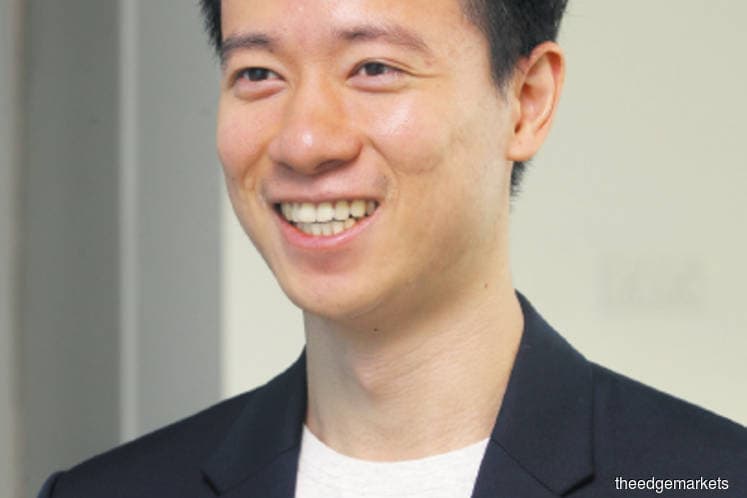
This article first appeared in The Edge Malaysia Weekly on June 3, 2019 - June 9, 2019
ACCORDING to the Securities Commission Malaysia’s (SC) Annual Report 2018, 35% of equity crowdfunding (ECF) investors were below 35 years old and retail investors made up 54% of the investor base. Malaysians accounted for 94% of total investors and foreign investors, the remaining 6%.
The majority of peer-to-peer (P2P) investors were also below 35 years old, accounting for 57% of total individual investors. About 93% of investors have invested in multiple campaigns. A majority of investors came from the retail segment, at 87%, which was supported by an even stronger local participation (99%).
So, what is it that draws young investors to P2P financing and ECF? Is it their high returns or is it because they are easy to invest in?
According to findings of a survey conducted by Funding Societies Malaysia on investor perception of P2P financing and its own platform, return on investment of as high as 14% per annum is a bigger draw for investors to participate in P2P financing platforms than to put their money in fixed deposits or other investments.
That P2P financing appeals more to millennials (between 23 and 38 years old) is supported by the fact that they make up 70% of Funding Societies Malaysia’s investor portfolio. This is mainly due to pull factors such as high rates of return, monthly compounding effects and short-term tenure. The stringent due diligence process undertaken by P2P financing platforms on small and medium enterprises (SMEs) also boosts investor confidence.
Funding Societies Malaysia co-founder and CEO Wong Kah Meng points out that in a recent survey of 500 investors, 90% of them believed that investing in P2P financing via its platform has met their expectations while 80% were satisfied with their investment experience.
“From our experience, investors usually favour investment opportunities that have a tenure of less than 12 months,” he says.
He adds that a key area of investor education is the risk-return considerations of P2P financing. In order to minimise the risk of loss, investors should look to diversify their portfolios across multiple SMEs to reduce the impact of an SME defaulting on their overall returns.
“Investors should also do their due diligence on the P2P platform operators before investing ... including whether they are recognised by the SC, historical default rates, management team and operating experience,” says Wong.
FBM Crowdtech Sdn Bhd chief investment officer André Betker concurs. “Do keep in mind that all investments entail risk and, usually, the higher the risk you are willing to take, the better the potential return,” he says.
He adds that FBM Crowdtech’s P2P investors are generally looking at monthly returns and cash flow with a targeted return of 8% to 15% per annum. In contrast, its ECF investors are willing to take on higher risk with the potential to gain multiple times their investments when they exit five years or more later.
“In Malaysia, we have several thousand investors. Many of them are ordinary investors who would like to invest just RM1,000. But there are also a large number of millionaires, angel investors and venture capitalists who invest five or six-figure amounts,” Betker says.
B2B Finpal Sdn Bhd chief technology officer Chua Chin Hang says its platform’s average return is 10.8% per annum and so far, its default rate is only 0.18%.
“The majority of our investors are aged between 30 and 45. We also notice that the same investors increase their investments because of the returns,” he says.
“Investors generally like our platform because of the short turnover period. On average, our financing duration is around 111 days and this allows the investor to reinvest his money in new notes.”
A 31-year-old P2P investor tells The Edge that he was intrigued by the financing platforms because of the enhanced investor experience.
“The P2P platforms offer better interface and user experience. It is a whole new experience, almost like online shopping,” he says.
He adds that unlike unit trusts and stocks, which have many complicated calculations and financial ratios, P2P investing is straightforward. “Not many youngsters understand future projections, cash flow and PE (price-earnings) ratios. P2P companies are probably less transparent, but they are easier to understand. They just tell you how much money they need, what the risks are and how much the expected return is. For young investors like me, it is more convenient that way.”
Another P2P investor shares the same view. He says he feels assured in trying out such alternatives as the SC is regulating the P2P industry.
“At the end of the day, it really depends on who you believe in and who offers the lowest cost. But, of course, there is always a possibility of default. With interest rates coming down, chances are most SMEs will go back to the banks, and the lower quality ones will go for platforms like this. Hence, my investment is spread across 11 companies ... I think I am well diversified,” he says.
He adds that Funding Societies Malaysia usually posts notices when companies fail to pay up.
Save by subscribing to us for your print and/or digital copy.
P/S: The Edge is also available on Apple's AppStore and Androids' Google Play.